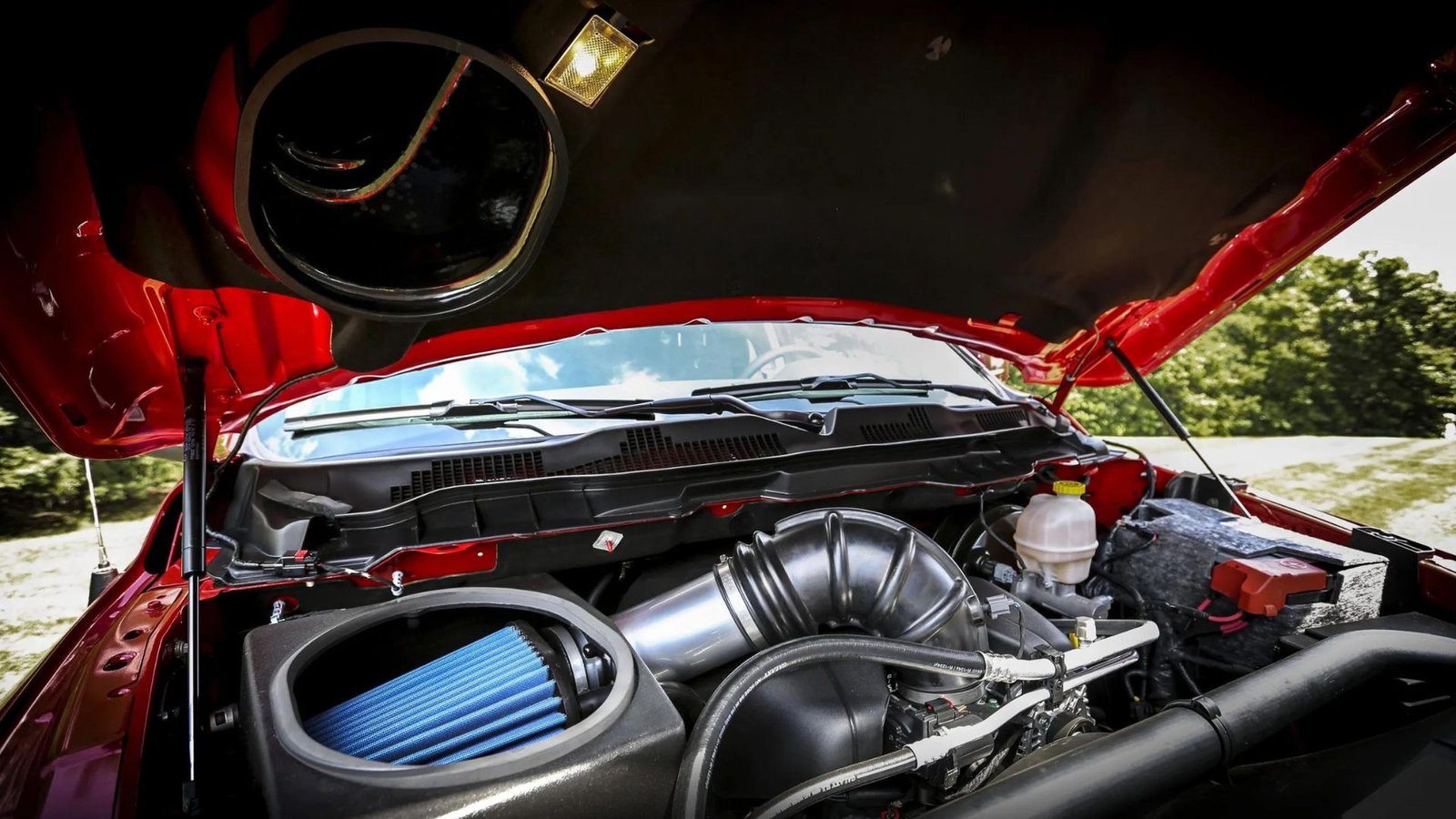Upgrading your engine can lead to significant improvements in fuel efficiency and overall performance. Whether you’re looking to get more power, better mileage, or both, several engine upgrades can help you achieve your goals. Here’s a guide to the top engine upgrades that boost efficiency and make your vehicle run better.

1. High-Performance Air Intake Systems
1.1 What They Do
Overview: A high-performance air intake system improves the flow of air into the engine, which can enhance combustion efficiency.
How They Work:
- Improved Airflow: Replaces the factory air filter and intake system with a more efficient design that allows more air to enter the engine.
- Better Filtration: Often uses high-quality filters that provide better filtration without restricting airflow.
Benefits:
- Increased Power: More air means better combustion, which can result in increased horsepower.
- Improved Fuel Efficiency: Better air-fuel mixture can lead to improved fuel economy.
Drawbacks:
- Cost: Performance intake systems can be expensive.
- Maintenance: May require more frequent filter cleaning or replacement.
2. Performance Chip or ECU Tuning
2.1 What They Do
Overview: Performance chips or ECU (Engine Control Unit) tuning reprogram your engine’s computer to optimize performance.
How They Work:
- Reprogramming: Adjusts parameters like fuel delivery, ignition timing, and boost levels to enhance engine performance.
- Customization: Some tuners offer customized settings based on driving style and fuel type.
Benefits:
- Enhanced Efficiency: Can improve both power output and fuel efficiency by optimizing engine settings.
- Increased Performance: Provides a noticeable boost in acceleration and overall driving dynamics.
Drawbacks:
- Warranty Issues: May void your vehicle’s warranty.
- Complexity: Requires professional installation and tuning.
3. Turbochargers and Superchargers
3.1 Turbochargers
Overview: Turbochargers force more air into the engine, allowing for more fuel to be burned and increasing power output.
How They Work:
- Boosted Airflow: Uses exhaust gases to drive a turbine that compresses the intake air.
- Efficiency Gains: Can improve power and efficiency, especially in smaller engines.
Benefits:
- Increased Power: Significantly boosts horsepower without a larger engine.
- Improved Efficiency: More efficient combustion can lead to better fuel economy.
Drawbacks:
- Heat and Stress: Adds extra heat and stress to the engine, requiring better cooling systems.
3.2 Superchargers
Overview: Superchargers are similar to turbochargers but are powered directly by the engine’s crankshaft.
How They Work:
- Mechanical Boost: Compresses the intake air to increase power and efficiency.
- Immediate Power: Provides immediate boost with no turbo lag.
Benefits:
- Instant Power: Delivers power instantly without lag.
- Efficiency Improvement: Can enhance both performance and fuel efficiency.
Drawbacks:
- Increased Load: Draws power from the engine, which can affect fuel economy.
4. High-Performance Exhaust Systems
4.1 What They Do
Overview: High-performance exhaust systems improve engine efficiency by reducing exhaust backpressure and enhancing exhaust flow.
How They Work:
- Enhanced Flow: Features larger diameter pipes and high-flow mufflers that reduce resistance and allow exhaust gases to exit more quickly.
- Material: Often made from lightweight, high-quality materials like stainless steel.
Benefits:
- Increased Power: Reduces backpressure, allowing the engine to breathe better and produce more power.
- Better Fuel Economy: Improved exhaust flow can lead to better fuel efficiency.
Drawbacks:
- Noise: Can increase engine noise, which may not be desirable for all drivers.
5. Cold Air Intakes
5.1 What They Do
Overview: Cold air intakes bring cooler air into the engine, which is denser and can improve combustion efficiency.
How They Work:
- Cooler Air: Directs cooler air from outside the engine bay into the intake system.
- Improved Efficiency: Cooler, denser air helps the engine burn fuel more efficiently.
Benefits:
- Enhanced Performance: Cooler air can lead to better power output and efficiency.
- Improved Throttle Response: Provides a more responsive driving experience.
Drawbacks:
- Installation: Requires professional installation for optimal performance.
6. Lightweight Flywheel
6.1 What It Does
Overview: A lightweight flywheel reduces the engine’s rotational mass, which can improve throttle response and efficiency.
How It Works:
- Reduced Mass: A lighter flywheel requires less power to accelerate and decelerate.
- Improved Response: Enhances throttle response and acceleration.
Benefits:
- Better Performance: Improves acceleration and responsiveness.
- Increased Efficiency: Can contribute to better fuel economy by reducing engine load.
Drawbacks:
- Driving Experience: Can result in more engine vibration and noise.
7. Upgraded Fuel Injectors
7.1 What They Do
Overview: Upgraded fuel injectors provide more precise fuel delivery, which can enhance engine performance and efficiency.
How They Work:
- Precision: Deliver fuel in a finer mist for better combustion.
- Increased Flow: Larger injectors can provide more fuel for higher power output.
Benefits:
- Improved Combustion: More precise fuel delivery leads to better engine performance and efficiency.
- Enhanced Power: Allows for higher power output when combined with other upgrades.
Drawbacks:
- Compatibility: Must be matched to the engine’s specifications for optimal performance.
8. Performance Engine Oil
8.1 What It Does
Overview: Using high-quality, performance-grade engine oil can reduce friction and improve engine efficiency.
How It Works:
- Lubrication: Reduces friction between engine components, improving efficiency and longevity.
- Protection: Provides better protection against wear and tear.
Benefits:
- Increased Efficiency: Reduced friction leads to smoother engine operation and better fuel economy.
- Longer Engine Life: High-quality oil can extend the life of engine components.
Drawbacks:
- Cost: Premium engine oils can be more expensive than standard options.
Conclusion
Upgrading your engine with high-performance components can lead to noticeable improvements in efficiency and power. From high-performance air intakes and turbochargers to lightweight flywheels and upgraded fuel injectors, each upgrade plays a role in enhancing your vehicle’s performance. By carefully selecting and installing these upgrades, you can achieve better fuel economy, increased power, and a more enjoyable driving experience. Regular maintenance and professional installation are key to ensuring that these upgrades deliver the maximum benefit and keep your engine running smoothly.




